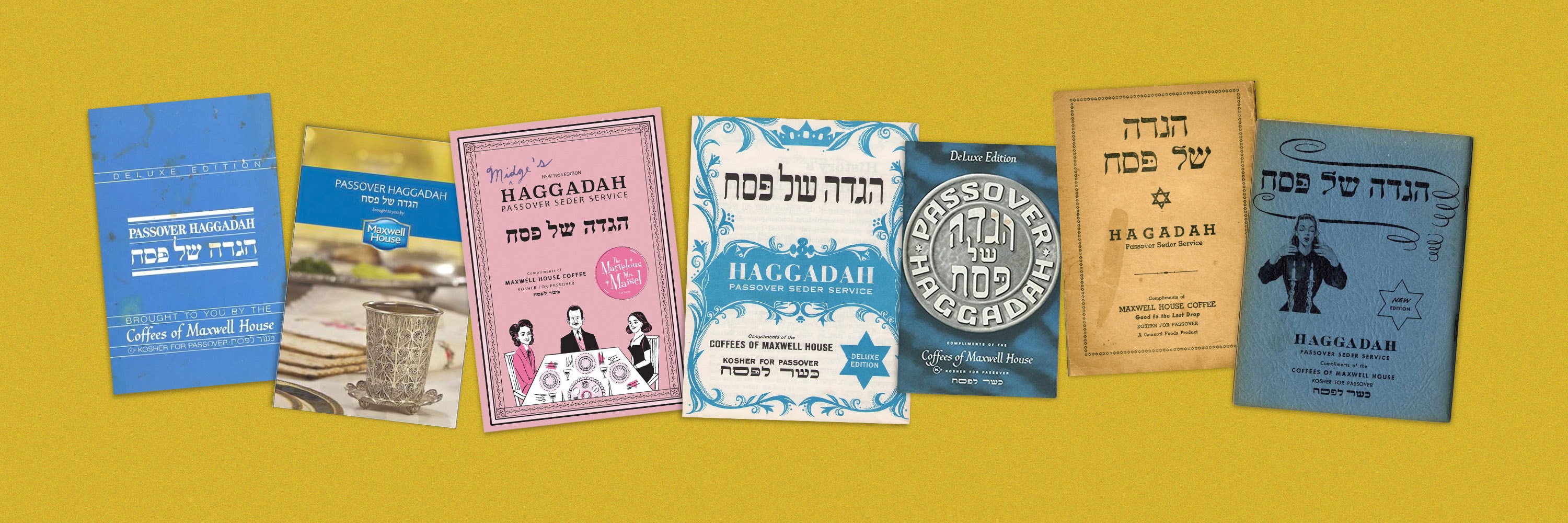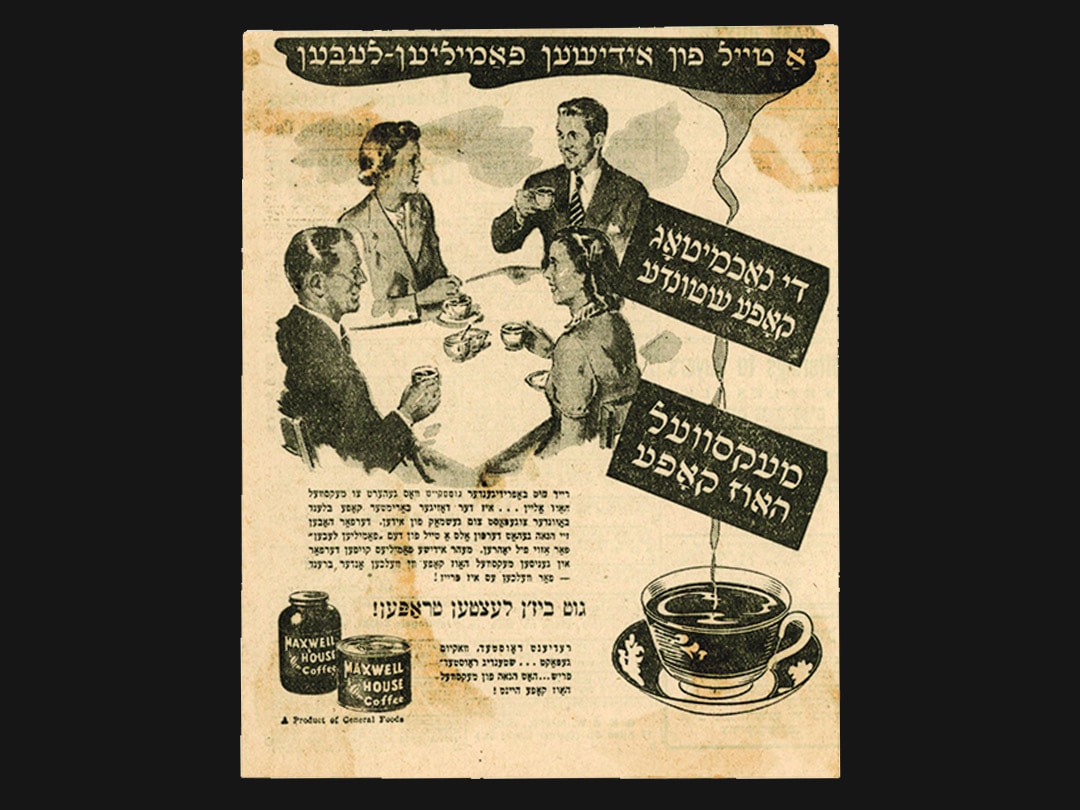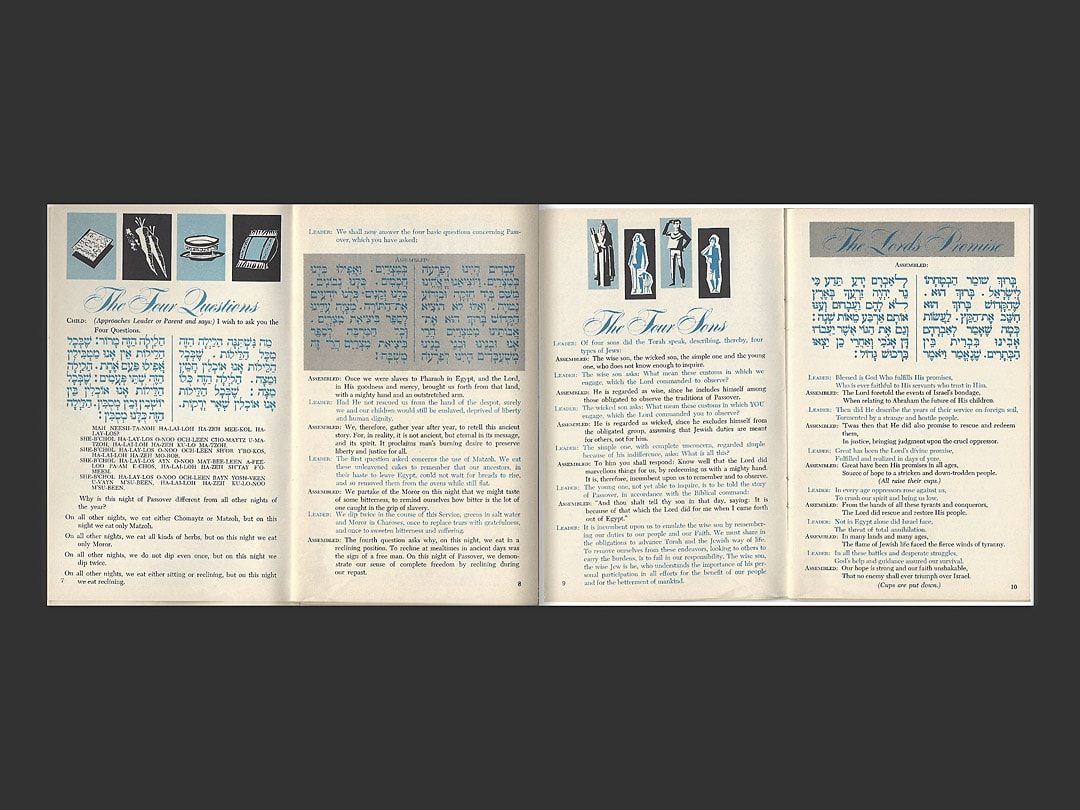As strange as it may sound, the best-selling Haggadah in the world is not from Israel at all. It’s called Maxwell's Haggadah, and it’s known to almost every American Jew who has ever celebrated Passover. Since it was first printed a hundred years ago, it has sold over fifty-five million copies. In most American Jewish homes you will find several of them in different versions, all labeled with the name of the American coffee company Maxwell House.
Listen to this – when I was looking for a copy of this Haggadah, which I’d seen quite a few times when living in the United States, I thought to ask in the WhatsApp group of my eldest son's baseball team. Sure enough, some older immigrants from the United States and Canada still had theirs – thanks to them, you can enjoy the commercial beauty of its design here.

So what is the connection between this Christian-owned, American coffee brand and the Haggadah of Passover? This is a very good question, and the answer may surprise you. During the years of the Great Depression in the United States, a halachic concern was raised that coffee, confused as a bean, may not be considered kosher for Passover. This caused a decline in coffee sales among Ashkenazi Jews in the United States, at a time when selling goods was already tough.
In response to sales, Jewish agency Joseph Jacobs Advertising was invited to address the problem. The team rushed to publish advertisements in Jewish newspapers confirming that America's chief rabbis approved coffee as kosher for Passover. A few years later, in 1932, Joseph convinced Maxwell House to print its branded Haggada, reinforcing coffee’s kosher status. The rest, as they say, is history.
The first four versions of the Haggadah were in black and white, with Hebrew text, English translations, and almost no illustration. In 1951 illustrations were added, and in 1960 it adopted its iconic blue cover, later followed by an orange colour palette. In 1998 its traditional illustrations were replaced by atmospheric images of a typical American Jewish family at the Seder. The fonts in the first versions were, of course, serifs, but by the 1950s were replaced by more modern, sans serif type in Hebrew and English. You might even recognize that the Hebrew font used is David.
If you’re ever in the United States or Canada for Passover and have never experienced Seder night with a Maxwell’s Haggadah, make it happen – for North American Jews, this book is nothing less than a cultural icon. Just ask President Obama, who used this same Haggadah when celebrating Passover at the White House!






